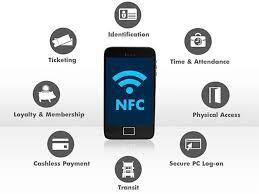Near Field Communication Market Growth Challenges Impacting Global Expansion Rates

The near field communication market has emerged as a powerful enabler of seamless digital interactions, particularly in the areas of contactless payments, ticketing, access control, and data exchange. However, despite its rising popularity, the market faces numerous growth challenges that hinder its global expansion and technological evolution. These barriers are multidimensional—ranging from economic and infrastructural limitations to consumer hesitancy and regulatory complexities.
1. Uneven Market Penetration Across Regions
One of the foremost challenges for NFC growth is the uneven adoption across developed and developing regions. While countries like Japan, South Korea, the U.S., and parts of Europe have embraced NFC-powered solutions in retail, transit, and public services, many low- and middle-income countries still lack the infrastructure and awareness to support the technology.
Retailers in emerging economies often use older point-of-sale (POS) terminals that do not support NFC, requiring expensive upgrades. Furthermore, lack of reliable internet connectivity and slow adoption of smartphones with NFC capabilities hamper the scalability of services in these regions.
2. High Cost of Infrastructure and Upgrades
Implementing NFC solutions requires significant upfront investment. From installing NFC-enabled POS machines and transit gates to upgrading mobile devices and backend systems, the cost of infrastructure remains a major growth hurdle. For small and medium enterprises (SMEs), these expenses often outweigh the perceived benefits, especially when low-cost alternatives like QR codes are already in place.
In addition, ongoing costs for software updates, cybersecurity integration, maintenance, and staff training further increase the total cost of ownership. These financial constraints limit the speed at which businesses can adopt and scale NFC solutions.
3. Interoperability and Standardization Issues
Despite being a standardized communication technology, NFC still suffers from interoperability issues between devices, platforms, and operating systems. For example, Apple restricts certain NFC functions that are freely accessible on Android devices, leading to inconsistent user experiences across platforms.
Moreover, proprietary software used by some service providers prevents seamless communication between different systems. This fragmentation complicates integration efforts for developers and businesses aiming to offer cross-platform NFC applications, stalling market growth.
4. Limited Public Awareness and Trust
Consumer awareness and trust play a critical role in the success of NFC technology. However, many users remain unaware of NFC's full range of applications beyond mobile payments. A significant portion of the population either doesn’t know how to activate NFC on their smartphones or fears that using NFC will expose them to cybersecurity risks such as unauthorized access or data theft.
This lack of understanding limits user engagement and reduces demand for NFC-powered services, particularly in regions where digital literacy is low or contactless technology is still emerging.
5. Competition from Alternative Technologies
The NFC market also faces stiff competition from other wireless and contactless technologies such as Bluetooth Low Energy (BLE), Ultra-Wideband (UWB), and QR codes. These alternatives offer varying advantages—such as longer range, lower cost, or ease of deployment—which make them attractive substitutes, especially for businesses operating in cost-sensitive markets.
QR codes, in particular, have become widely accepted for payments and check-ins in markets like India and China, due to their low setup cost and ease of use. This strong competition dilutes NFC’s market share and hinders its universal adoption.
6. Security Concerns and Regulatory Compliance
Although NFC is generally considered secure due to its short range, it is not entirely immune to threats. Instances of relay attacks and data interception have raised concerns among users and regulators. To mitigate these risks, companies must implement strong encryption, authentication protocols, and compliance mechanisms—all of which require time, expertise, and additional resources.
Moreover, adhering to data protection regulations like GDPR or local cybersecurity laws introduces further compliance hurdles. Navigating these regulatory landscapes becomes increasingly challenging for multinational corporations aiming to roll out NFC services globally.
7. Technological Limitations
While NFC is suitable for close-range interactions, its functionality is inherently limited by its design. The technology cannot support high-speed data transfers or long-distance communications, restricting its utility in scenarios where broader connectivity is needed—such as in industrial IoT, logistics, or smart agriculture.
This limitation reduces NFC’s competitiveness in emerging high-growth sectors that demand more versatile communication technologies.
Conclusion
The near field communication market holds immense potential, but it is currently constrained by multiple growth challenges. From infrastructural costs and market fragmentation to consumer skepticism and competing technologies, the barriers are both technical and strategic in nature.
For the NFC market to realize its full promise, stakeholders must work collaboratively to improve infrastructure access, simplify integration, standardize protocols, and educate the public. Addressing these challenges head-on will be key to unlocking the next wave of NFC adoption, innovation, and sustainable global growth.
- Art
- Causes
- Crafts
- Dance
- Drinks
- Film
- Fitness
- Food
- Games
- Gardening
- Health
- Home
- Literature
- Music
- Networking
- Other
- Party
- Religion
- Shopping
- Sports
- Theater
- Wellness


